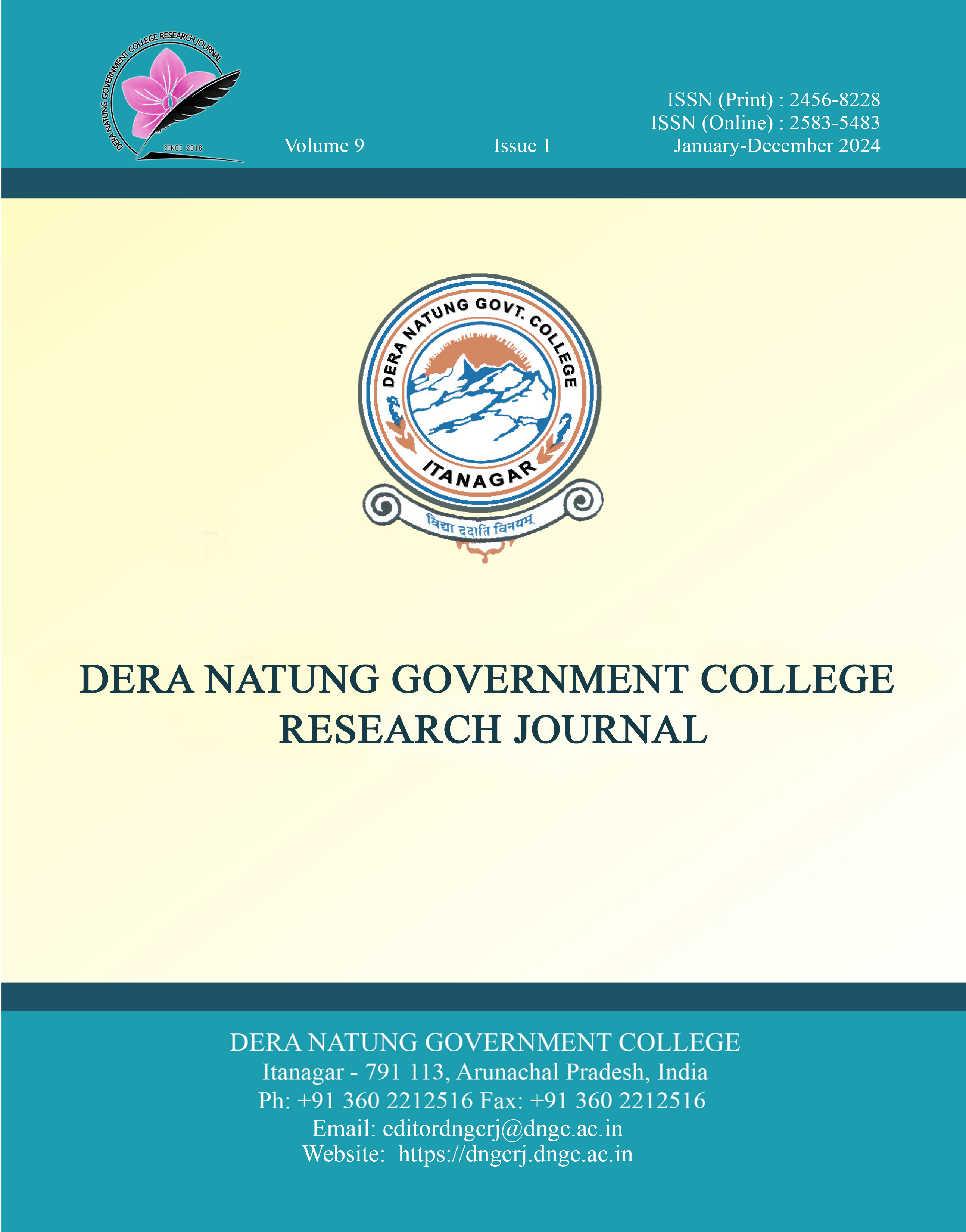Investigation of the Equilibrium Constant and Thermodynamic Properties of Borax Dissolution Using Titration Techniques
DOI:
https://doi.org/10.56405/dngcrj.2024.09.01.10Keywords:
Borax Dissolution, Thermodynamic Parameters, Equilibrium Constant (ksP), Titration, Thermodynamics, Temperature DependencyAbstract
This experiment uses the method of titrating saturated Borax aqueous solution with hydrochloric acid to determine the equilibrium constant of Borax as well as its enthalpy change, entropy change, and standard free energy of dissolution. Using this method, the equilibrium constant was found to be 0.172 for the first Borax sample at 41 ॰C while it was 0.157 for the second Borax sample at 3.9 ॰C. Using a graph of ln(ksp) vs. 1/Temperature, the change in enthalpy was 620,000 J/mol, the change in entropy was -12.72 J/molK, and the standard free energy was 624 kJ/mol.
Downloads
References
Atkins, P., & de Paula, J. (2018). Atkins' Physical Chemistry (11th ed.). Oxford University Press, Oxford.
Cox, J.D., Wagman, D.D., & Medvedev, V.A. (1989). CODATA Key Values for Thermodynamics. Hemisphere Publishing Corp., New York.
Dematteis, E.M., Jensen, S.R.H., Jensen, T.R., & Baricco, M. (2020). Heat capacity and thermodynamic properties of alkali and alkali-earth borohydrides. The Journal of Chemical Thermodynamics, 143, 106055.
Franks, F., & Johnson, M.C. (2005). Chemistry of aqueous solutions: Thermodynamics and solubility. Journal of Chemical Physics, 122, 104506.
Gaffney, J.S., Marley, N.A. (2018). Thermodynamics and Energy Balance. In J.S. Gaffney & N.A. Marley (Eds.), General Chemistry for Engineers (pp. 241-281). Elsevier. ISBN: 9780128104255. doi:10.1016/B978-0-12-810425-5.00008-4.
Gale, W. A. (1961). Development and present status of the borax industry. In Borax to Boranes (Vol. 32, pp. 13–19). American Chemical Society. doi:10.1021/ba-1961-0032.ch003
Garcia, P., & Li, Z. (2018). Titration calorimetry: Techniques and applications. Analytical Chemistry, 90(8), 5022–5032.
Gholamreza, M., & Hosseini, S.A. (2019). Thermodynamics of borax dissolution in water using isothermal titration calorimetry. Journal of Chemical Thermodynamics, 131, 76-82.
Haddad, W.M. (2017). Thermodynamics: The Unique Universal Science. Entropy, 19 (11), 621. doi:10.3390/e19110621.
Johnson, R., & Lopez, M. (2021). Gibbs free energy and entropy in complex systems. Physical Review Letters, 126 (4), 041101.
Matsumoto, M., Kondo, K., Hirata, M., Kokubu, S., Hano, T., & Takada, T. (1997). Recovery of boric acid from wastewater by solvent extraction. Separation Science and Technology, 32(5), 983–991. https://doi.org/10.1080/01496399708000940
Schubert, D.M. (2003). Borates in Industrial Use. In: Roesky, H.W., Atwood, D.A. (eds) Group 13 Chemistry III. Structure and Bonding, vol 105. Springer, Berlin, Heidelberg. https://doi.org/10.1007/3-540-46110-8_1
Sharaf, M.A., et al. (2020). Solubility and Thermodynamic Properties of Borax in Aqueous Solutions: Experimental and Theoretical Studies. Journal of Chemical & Engineering Data, 65(5), 2572-2583.
Smith, J., & Williams, A. (2008). Thermodynamic properties of aqueous solutions of sodium borate. Journal of Physical Chemistry, 112, 13630–13635.
Smith, J. M., Van Ness, H. C., Abbott, M. M., & Swihart, M. T. (2017). Introduction to chemical engineering thermodynamics (8th ed., pp. 24–59). McGraw Hill.
Smith, R. A. (2000). Boric oxide, boric acid, and borates. Ullmann's Encyclopedia of Industrial Chemistry. https://doi.org/10.1002/14356007.a04_145.pub2
Smith, R.A. (2015). Boric Oxide, Boric Acid, and Borates. In Ullmann’s Encyclopedia of Industrial Chemistry, John Wiley & Sons, Hoboken, NJ, USA. 1-32. doi: 10.1002/14356007.a04_263.pub2
Taylor, D.S. (1949). Determination of Borax in Mixed Fertilizers. Journal of Association of Official Agricultural Chemists, 32 (2), 422-430.
Wacławska, I. (1995). Thermal decomposition of borax. Journal of Thermal Analysis, 43(1), 261–269. doi:10.1007/BF02635993
Downloads
Published
How to Cite
Issue
Section
License
Authors who publish with this journal agree to the following terms:
- Authors retain copyright and grant the journal right of first publication with the work simultaneously licensed under a Creative Commons Attribution 4.0 International License that allows others to share the work with an acknowledgement of the work's authorship and initial publication in this journal.
- Authors are able to enter into separate, additional contractual arrangements for the non-exclusive distribution of the journal's published version of the work (e.g., post it to an institutional repository or publish it in a book), with an acknowledgement of its initial publication in this journal.
- Authors are permitted and encouraged to post their work online (e.g., in institutional repositories or on their website) prior to and during the submission process, as it can lead to productive exchanges, as well as earlier and greater citation of published work.







